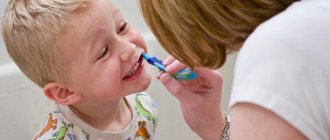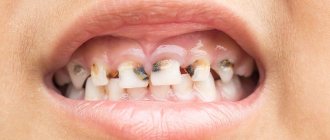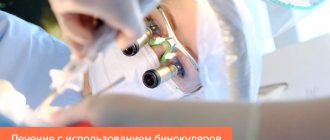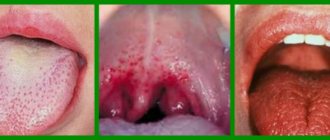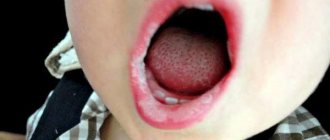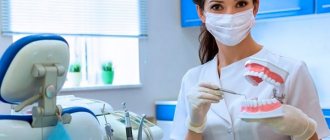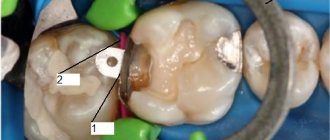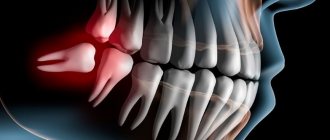Why are breastfeeding women afraid to have their teeth treated?
Any step of a nursing mother can affect the health of the child, so before performing the simplest usual actions, she evaluates whether this will harm the baby. When visiting a dentist, three things may cause concern:
- To make a diagnosis, you may need an x-ray of the diseased tooth;
- During treatment, filling materials and anesthesia medications are used;
- After the procedure, a course of antibiotics may be prescribed.
A young mother may fear that x-rays and medications will make breast milk unsuitable for feeding, and just in case, she may completely refuse dental treatment and postpone going to the doctor until the time when the baby is weaned.
How to avoid darkening of teeth
Once you achieve snow-white results in your tooth enamel, you need to try to maintain the whiteness. To do this, carefully monitor your diet, use special whitening pastes, herbal ones are especially suitable. The use of the following products should be limited:
- Dark-colored soft drinks and carbonated drinks;
- Black tea and coffee;
- Blueberries and blackberries;
- Chocolate and chocolate candies;
- Citrus fruit;
- Tomato sauce;
- Some medications;
- Chewing tobacco and cigarettes.
To maintain white enamel and healthy gums, brush your teeth at least twice a day for two to four minutes. Rinse your mouth regularly and use dental floss. Proper care removes plaque in a timely manner and prevents the formation of stains on tooth enamel.
Is it possible to treat teeth during breastfeeding?
If we compare the potential threat from medications used in dental treatment and from pathogenic bacteria in the carious cavity of the tooth, then the latter are much more dangerous for the child. Remember how many times a day a mother kisses her baby, not to mention the fact that she can taste food or drink from baby dishes to make sure they are at normal temperature? The infection will get to the child one way or another. Therefore, treating the teeth of a nursing mother is not only possible, but also absolutely necessary. You just need to warn your doctor about your situation.
If you go to the dentist at the first signs of caries, you can get by with minimal manipulations that do not require x-rays, anesthesia, or antibiotics. In this case, you don’t have to worry at all that dental treatment will somehow affect breast milk, and feed the baby immediately upon returning from the doctor.
X-rays during breastfeeding are also not contraindicated: short-term exposure to X-rays when photographing a diseased tooth will not make milk radioactive and will not harm the baby through breast milk. Moreover, filling materials will not penetrate into the blood and cannot pass into breast milk. And if there is a need for antibiotics, you can choose a medicine that is compatible with breastfeeding.
How to whiten teeth at home
When using these methods, it is important that the mother and baby are not allergic to any component. The most common remedy is soda. This is a strong and gentle natural bleach. Mix a quarter teaspoon of baking soda with water and brush your teeth with the mixture.
Apples and strawberries can whiten enamel naturally. But it is important only to eat strawberries and not leave pieces of the berry on the enamel and gums. With prolonged exposure, the acid in strawberries can damage tooth enamel. In addition, you should be careful when eating this berry during lactation, as it is a fairly allergenic product. You can find a complete list of allergenic foods here.
Dentists recommend periodically rinsing your mouth with salted water. To do this, stir a teaspoon of salt in a glass of warm boiled water. Wait until it cools down and rinse your mouth. Salt water cares for gums, relieves inflammation and kills harmful microbes. In addition, it gradually whitens the enamel.
A mixture of bay leaf and orange peel is another affordable way to whiten enamel. To prepare the product, use a few pieces of orange peel and one bay leaf. Grind the crust, grind the leaf to a powder and mix the ingredients. Rub the mixture onto your teeth and leave for five minutes, then rinse your mouth with warm water. Repeat the procedure once a week.
You can use banana peels in a similar way. Take a small piece of banana peel and rub it on your teeth. Leave the mixture on for two to three minutes and rinse your mouth with warm water. This cleaning is done twice a week.
Anesthesia for dental treatment during breastfeeding. How not to harm a child?
As for anesthesia, there is also no need to endure pain during the procedure.
If the doctor is warned that you are breastfeeding, he will select a drug compatible with breastfeeding. Breastfeeding women should not use painkillers containing adrenaline. Old-generation anesthetics - novocaine, lidocaine, which are practically not used in modern dental practice, can penetrate into breast milk in small quantities.
It is important!
Modern drugs, for example, ultracaine, articaine, are not contraindicated during breastfeeding if used in recommended doses.
Before treatment, check with your doctor what kind of drug he is going to give you, and whether the drug is compatible with breastfeeding.
Breastfeeding after the first month: what to expect
1 Ballard O, Morrow AL. Human milk composition: nutrients and bioactive factors. Pediatr Clin North Am. 2013;60(1):49-74. — Ballard O., Morrow A.L., “Composition of breast milk: nutrients and biologically active factors.” Pediatrician Clinic North Am. 2013;60(1):49-74.
2 Kent JC et al. Principles for maintaining or increasing breast milk production. J Obstet, Gynecol, & Neonatal Nurs. 2012;41(1):114-21. —Kent J.S. et al., “Principles of Maintaining and Increasing Milk Production.” J Obstet Ginecol and Neonetal Nurse. 2012;41(1):114-121.
3 Kent JC et al. Volume and frequency of breastfeedings and fat content of breast milk throughout the day. Pediatrics. 2006;117(3):e387-395. —Kent J.S. et al., “Breastfeeding volume and frequency and breast milk fat content throughout the day.” Pediatrix (Pediatrics). 2006;117(3):e387-95.
4 Kent JC et al. Longitudinal changes in breastfeeding patterns from 1 to 6 months of lactation. Breast Med. 2013;8(4):401-407. —Kent J.S. et al., “Longitudinal changes in breastfeeding patterns from 1 to 6 months of lactation.” Brest Med. 2013;8(4):401-407.
5 Almroth S, Bidinger PD. No need for water supplementation for exclusively breast-fed infants under hot and arid conditions. Trans R Soc Trop Med Hyg. 1990;84(4):602-604. — Elmroth S., Biedinger P.D., “No need for supplemental feeding for exclusively breastfed infants in conditions of high temperature and dry air.” Trans R Soc Trop Med Hyg. 1990;84(4):602-604.
6 Victora CG et al. Breastfeeding in the 21st century: epidemiology, mechanisms, and lifelong effect. Lancet. 2016;387(10017):475-490. — Victor S.J. et al., “Breastfeeding in the 21st Century: Epidemiology, Mechanisms, and Long-Term Effects.” Lancet. 2016;387(10017):475-490.
7 Peres KG et al. Effect of breastfeeding on malocclusions: a systematic review and metaanalysis. Acta Paediatr. 2015;104(S467):54-61. — Perez K.G. et al., “The Effect of Breastfeeding on Malocclusion: A Systematic Review and Meta-Analysis.” Acta Pediatrician. 2015;104(S467):54-61.
8 Mennella JA, Beauchamp GK. Maternal diet alters the sensory qualities of human milk and the nursing's behavior. Pediatrics. 1991;88(4):737-744. — Mennella J.A., Beauchamp G.C., “Maternal nutrition influences the organoleptic properties of breast milk and infant behavior.” Pediatrix (Pediatrics). 1991;88(4):737-744.
9 Hassiotou F et al. Maternal and infant infections stimulate a rapid leukocyte response in breastmilk. Clin Transl immunology. 2013;2(4). — Hasiotou F. et al., “Mother-infant infectious diseases stimulate a rapid leukocyte response in breast milk.” Clin Transl Immunology. 2013;2(4).
10 Brown A, Harries V. Infant sleep and night feeding patterns during later infancy: Association with breastfeeding frequency, daytime complementary food intake, and infant weight. Breast Med. 2015;10(5):246-252. — Brown A., Harris W., “Night feedings and infant sleep in the first year of life and their relationship with feeding frequency, daytime supplementation and infant weight.” Brest Med (Breastfeeding Medicine). 2015;10(5):246-252.
11 Infant sleep information source. [Internet]. Normal Infant Sleep Development; December 2022 — All about children's sleep. [Online] “Development of Normal Sleep in the Child,” December 2022 [cited February 2018].
12 Baby sleep science. [Internet]. The-Four-Month-Sleep-Regression-What-is-it-and-What-can-be-Done-About-it. March 2014 - The science of children's sleep. [Internet], “Four Month Sleep Regression: What It Is and What to Do About It.” March 2014 [cited February 2018].
13 The Myth Of Baby Sleep Regressions – What's Really Happening To Your Baby's Sleep? [Internet]. Pinky McKay; December 2022 — “The myth of baby sleep regression - what’s really happening to your baby?” [Internet]. Pinky McKay, December 2022 [cited February 2018].
14 Kendall-Tackett K et al. The effect of feeding method on sleep duration, maternal well-being, and postpartum depression. Clinical Lactation. 2011;2(2):22-26. - Kendall-Tuckett K. et al., “The influence of feeding mode on sleep duration, maternal well-being, and the development of postpartum depression.” Clinic Lactation. 2011;2(2):22-26.
15) Harrison D et al. Breastfeeding for procedural pain in infants beyond the neonatal period. Cochrane Database Syst Rev. 2014;10. — Harrison D. et al., Breastfeeding for pain relief during medical interventions in the newborn period. Cochrane Database of Systems Rev. 2014;10:CD11248
16 Czank C et al. Retention of the immunological proteins of pasteurized human milk in relation to pasteurizer design and practice.Pediatr Res. 2009;66(4):374. — Zhank S. et al., “Preservation of immunological proteins in pasteurized milk depending on the pasteurization technique and practice.” Pediatrician Res. 2009;66(4):374.
17 Weaning from the breast. (2004). Paediatr Child Health 9(4):249–253. — “Weaning from the breast” (2004). Pediatr Child Health 9(4):249–253.
Do I need to express milk after anesthesia?
If the medicine used for pain relief is compatible with breastfeeding, then there is no need to express. If the dose of the drug has been increased or the instructions prescribe using it with caution during breastfeeding, then it is better to express the milk after anesthesia. Your doctor can give you advice on this matter, taking into account the type of anesthesia you were given.
So
- Breastfeeding women are afraid to have their teeth treated because, in their opinion, drugs or x-rays may penetrate into the milk. radiation from x-rays.
- In fact, nursing mothers’ teeth must be treated, since infection from diseased teeth will harm the child more than modern medications compatible with breastfeeding.
- In order not to harm the baby when using anesthesia, you need to tell the doctor that you are breastfeeding, and he will select anesthetics that are not contraindicated during breastfeeding.
- After anesthesia, you need to express only if the dose of the drug was increased, if medications containing adrenaline or outdated painkillers were used.
(0 ratings; article rating 0)
Share Share Share
Features of teeth whitening in dentistry
Teeth whitening in dentistry is carried out using special preparations to mineralize the enamel. This is a highly concentrated gel and catalyst. The procedure lasts 1.5-2 hours and helps remove dyes from the organic matrix of the tooth. This effect lasts from six months to several years.
After an in-office procedure, side effects may occur such as increased sensitivity and inflammation of the gums, destruction of enamel, toothache, and inflammation of the tongue. Bleaching is contraindicated for pregnant and lactating women, with damaged enamel and if you are allergic to the bleaching agents used. In addition, it is not useful for crowns, fillings, implants and veneers. To whiten such teeth, replacement with new ones is required.
Teeth whitening cannot be done during lactation, since the nursing mother’s body is weakened. The rehabilitation period becomes more complicated and takes a very long time; during the process, there is an insufficient supply of calcium ions to the tooth enamel. This causes serious complications and tooth decay.

